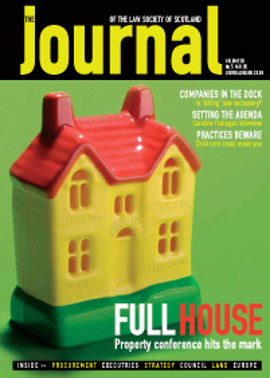The appeal of leave

Annual leave and sick leave
First – should an employee who is off on long-term sick leave and has run out of sick pay, be entitled to receive holiday pay under the Working Time Regulations 1998 (WTR), regulation 13(1) of which states that “a worker is entitled to four weeks’ annual leave in each leave year”?
In a controversial decision a couple of years ago, the EAT held in Kigass Aero Components v Brown [2002] ICR 697 that such employees who were no longer receiving any pay, should nevertheless be entitled to claim up to four weeks’ holiday pay per year under the WTR. The decision focused on the fact that the right to paid leave attached to “workers”, the EAT holding “that [did] not appear to import any requirement that in order to be a ‘worker’ some work needs to have been done or that some attendance to do work should have occurred, either within any particular period or at all”.
This question has now been revisited by the Court of Appeal in Commissioners of Inland Revenue v Ainsworth, which has determined that, rather than look at the definition of “worker”, the preferable approach is to look at the natural meaning of the word “leave”. The court accepted the Revenue’s submission that this connotes a release from something which would otherwise be an obligation. As it was put in the Revenue’s skeleton argument: “It is contrary to all ordinary usage for a worker who is off work for a year or more as a result of serious illness to say that during some arbitrarily chosen part of that period he is taking ‘leave’ – leave from what?” The court therefore accepted the argument that statutory paid holiday does not continue to accrue while a worker is off on long-term sick leave.
The case raises a number of questions to which the answer is not immediately evident. For example, how does this affect women who are off on additional maternity leave; or, will it be discriminatory to apply its principles to individuals who are off on long-term sick leave because they are disabled? These are important issues to be mulled over and will no doubt prompt legal challenges in the months ahead.
Maternity leave and bonuses
Next, we look briefly at maternity leave and bonus payments. The EAT has held in Hoyland v Asda Stores that employers are entitled to make a pro rata reduction in bonuses paid to staff, to reflect periods when a woman is absent on maternity leave. However, this is subject to certain qualifications.
First of all, the case dealt with an attendance bonus, and no guidance is given as to the principles which should be applied when a performance bonus is in issue. Secondly, the bonus must be paid in respect of the two week period of compulsory maternity leave immediately following birth.
Permission has been granted to appeal to the Court of Session, so this is not the final word we will hear on this issue.
Maternity leave and pay rises
Finally, a rather tricky set of new regulations governing statutory maternity pay and pay rises has been introduced as a result of the European Court judgment in Alabaster v Woolwich plc and Secretary of State for Social Security (C-147/02).
The rules, set out in the Statutory Maternity Pay (General) (Amendment) Regulations 2005
(SI 2005/729), mean that if you award a pay rise you must look to see what effect that will have on a woman’s statutory maternity pay entitlement. This applies to any pay rise awarded between the beginning of the relevant period for calculating SMP and the end of the maternity leave (whether this be OML (for the initial 26 weeks) or AML (for a further 26 weeks)).
Simplifying things slightly, when you are calculating a woman’s “average weekly earnings” (AWE) for the purpose of calculating SMP, you use the eight weeks before the end of the qualifying week (the 15th week before the expected week of childbirth). Therefore, any pay rise which takes effect from the start of that eight week period, up to the end of maternity leave, will result in AWE having to be recalculated and you having to make good any arrears of SMP. It is possible that the length of time involved could be anything up to 17 months, so it may be that where, for example, an individual receives an annual pay increase, AWE will need to be recalculated and arrears paid more than once.
The regulations came into force on 6 April 2005 and apply whenever a pay rise is put into effect after that date. It is also possible that the change could be extended to affect past periods; this will become clear when the Court of Appeal issues its decision in the Alabaster case.
Jane Fraser, Head of Employment,Pensions and Benefits, Maclay Murray & SpensIn this issue
- Leaving on a high
- The JAB: why it isn't working
- One house, many rooms
- Bad company
- Tender and true
- Beware the pitfalls
- Alien investors in the US
- Budgeting and beyond
- Let's play tag
- Same old story
- Getting the message across
- Council life
- Should the party pay?
- Unintended effects?
- A fine Profile
- Public benefit?
- The appeal of leave
- When is a cost not an expense?
- Website reviews
- Book reviews
- What a waste!
- How safe are your titles?






